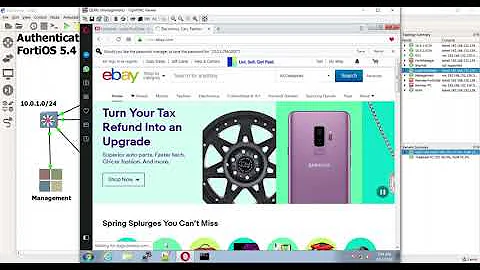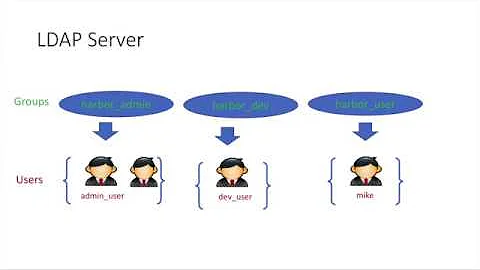How does LDAP handle supplementary/secondary user groups?
Solution 1
LDAP is just a directory of information. How that information gets stored and retrieved is up to the application. In this case, posix users and groups are modeled after the /etc/passwd and /etc/group files. Each user entry lists the gid for its primary group. Each group lists all of its members(usually less the ones listing it as their primary group).
Samba and the various nss plugins to store user and group info in LDAP all do a search to find the groups a user is a member of at log in. The memberUid attribute should be indexed to make group membership searches fast. For a given user account, the search filter is something like:
(&(objectclass=posixGroup)(memberUid=$user))
If you wanted to see the users in a particular group, you could search with:
(&(objectclass=posixGroup)(cn=$group))
This assumes that all of your groups are of the posixGroup objectClass.
Solution 2
I'm not a big OpenLDAP user, but if this were an Active Directory environment I'd use the "memberOf" attribute present in each user account object. In the OpenLDAP world, it looks like the memberOf overlay will do what you're looking for. I suspect this question will tell you what you need to know to get this going.
Related videos on Youtube
Mr. Shickadance
Updated on September 18, 2022Comments
-
Mr. Shickadance over 1 year
I've seen similar questions related to configuring Apache to authenticate via LDAP, but this basic question still has me confused.
In my setup, I created users who all have the same primary GID, then I added users to various (supplementary/secondary) groups. I have tested these user accounts, and in most situations everything works fine - my permissions based on supplementary group membership is working. I used the
smbldap-toolspackage to configure my users and groups, and specifically I usedsmbldap-usermod -G +NEW_GROUP userto add users to the supplementary groups.If I do
getent groupI see those supplementary groups and their members. Good.If I look at the LDAP entry for one of the supplementary groups, I see all the users listed just as expected.
However, when I look at each user's LDAP entry, only a
gidNumbercorresponding to the primary group is listed. That is, the LDAP entries for each user only list the primary group, and have no mention of secondary groups.How does Samba/LDAP (using smbldap-tools) handle supplementary/secondary groups?
Further, how could I form a search filter to identify members of a supplementary group?
-
daff over 12 yearsThe OP is apparently using POSIX groups (such groups have a
gidNUmberand are ofobjectClass posixGroup), which can not be used with thememberOfoverlay. -
daff over 12 yearsThe problem with
posixGroupis, unfortunately, that it is not possible to get, with a single filter/query, every group of which a user is part. You can ask for the user's primary group (which is stored in the user object itself) and you can ask a group for all its users, but everything else needs to be done at a higher (or lower?) level, e.g. the scripting language used (Bash, Python, Perl, ...). Ideally there would be amemberOfoverlay that supportsposixGroupandmemberUid, but there doesn't seem to be one. -
 Ricardo Gomes over 12 yearsThat wasn't the original question. However, if you are writing a program, what is the harm in making two queries?
Ricardo Gomes over 12 yearsThat wasn't the original question. However, if you are writing a program, what is the harm in making two queries? -
 Ricardo Gomes over 12 yearsSee serverfault.com/questions/224750/… for instructions on setting up groups so memberof works.
Ricardo Gomes over 12 yearsSee serverfault.com/questions/224750/… for instructions on setting up groups so memberof works. -
Pyperdown about 11 yearsSo, what does one do? Ditch posixGroup? What does one use in its place?




